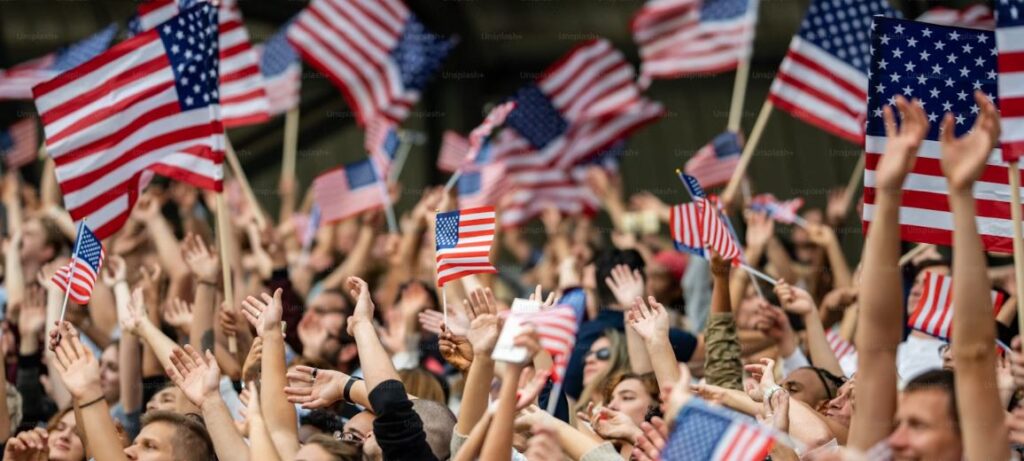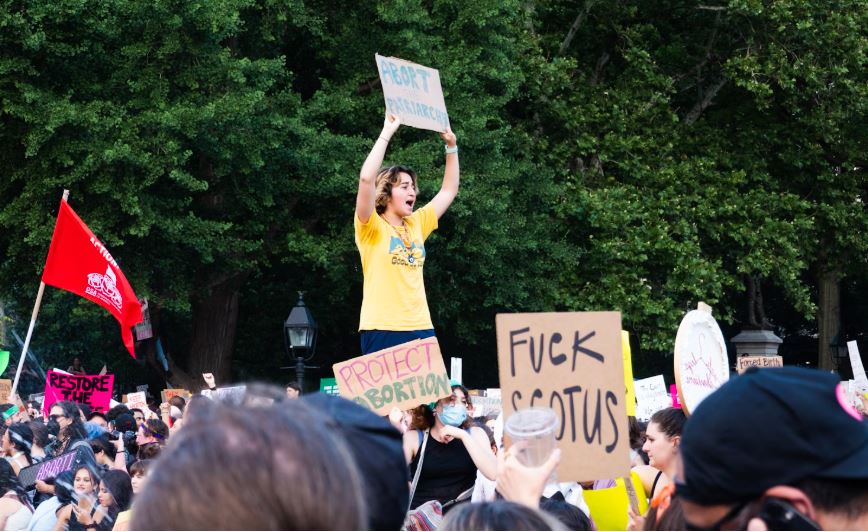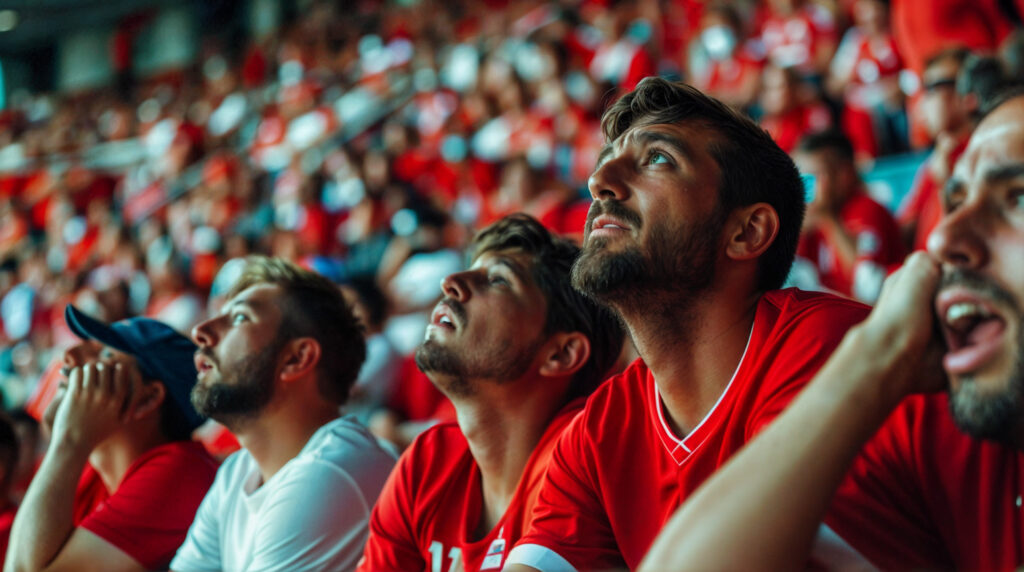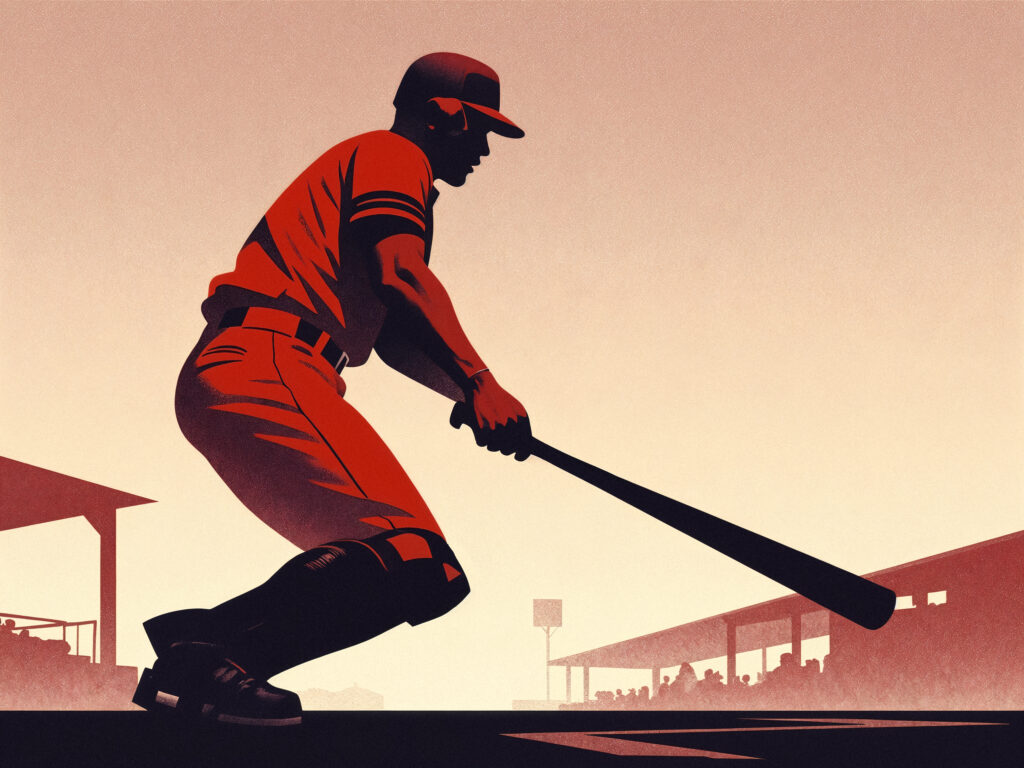
The roar at Selhurst Park is legendary. A wall of sound, fueled by unwavering passion, pushing the Eagles forward. But beneath the surface of this South London fortress, a different kind of noise is growing – the discordant clash of a secret war threatening to fracture Crystal Palace Football Club from within. On one side stand the Holmesdale Fanatics, the iconic core of the Selhurst Park ultras, renowned for their electrifying support and visual displays. On the other, the club’s board, led by long-serving Chairman Steve Parish, making decisions they believe secure the club’s future.
This isn’t just disagreement; it’s a deepening internal conflict manifesting in visible crystal palace fan protests, whispered accusations, and a palpable sense of distrust – a cpfc board controversy simmering dangerously close to boiling over. This is the real reason behind the growing palace fc fan unrest, a battle for the very soul of the club.
Crystal Palace Fan Protests
Tensions are boiling over at Selhurst Park as Crystal Palace fans, led by a group of passionate Ultras, rise up in protest against the club’s board. What began as murmurs of dissatisfaction has erupted into a full-blown campaign, with banners, walkouts, and chants filling the stands. At the heart of the unrest lies a deepening divide between the supporters and the decision-makers, threatening to fracture the unity that once defined the South London club. This is more than just football—this is a battle for the soul of Crystal Palace.
The Holmesdale Fanatics: Architects of Atmosphere, Guardians of Identity
To grasp the depth of this crystal palace supporter board conflict, you must understand the Holmesdale Fanatics. Formed in 2005, they didn’t just improve Selhurst Park’s atmosphere; they transformed it into one of the Premier League’s most intimidating and vibrant. Their tifos are ambitious works of art, their chants relentless and inventive, their presence a significant, tangible factor in Palace’s famed home advantage. They are not mere spectators; they are stakeholders in the club’s identity, culture, and heritage.
Their protest isn’t born of entitlement, but of a profound, visceral fear that the soul of their club – the unique connection, the raw passion, the community spirit – is being systematically eroded by commercial imperatives and a perceived lack of genuine consultation. For them, it’s an existential fight.
The Board’s Balancing Act: Navigating the Premier League Minefield
Steve Parish and the Crystal Palace board are architects of the club’s modern stability. They navigated Palace from the brink of administration in 2010 to over a decade of Premier League football – a monumental achievement. Their legacy includes a Category 1 academy producing talent, incremental (though often painfully slow) stadium improvements, and establishing the club as a top-flight fixture. Their vision is inherently pragmatic: survival and sustainability in a financial landscape dominated by giants. This necessitates tough decisions – pursuing lucrative commercial partnerships, implementing tiered ticket pricing, focusing squad investments on value and resale potential over blockbuster signings.
From their perspective, they are the responsible custodians, safeguarding the club’s long-term future against the ever-present threat of relegation and financial ruin. Yet, this necessary pragmatism increasingly grates against the Fanatics’ deep emotional investment and desire for visible ambition.
The Fracture Points: Where the Secret War Ignites
The cpfc internal conflict isn’t about one single flashpoint, but a cluster of interconnected grievances that fuel the fan unrest:
-
The “Soulless” Commercialization: The Fanatics perceive a relentless shift where financial imperatives blatantly overshadow fan experience and club identity. Criticisms target perceived generic, “plastic” branding, expensive and sometimes unpopular sponsorship deals that clash with tradition, and a matchday experience increasingly seen as prioritizing corporate clients and hospitality over the traditional, vocal core support in the Holmesdale End. The core accusation? The board views fans primarily as revenue streams, not partners.
-
Chronic Communication Breakdown & Lack of Consultation: A fundamental complaint is the absence of genuine, two-way dialogue. Decisions impacting the matchday atmosphere (like persistent issues with displays/banners), ticketing policies (especially for the Holmesdale End and away allocations), or cherished club traditions are often seen as being imposed from above without meaningful, respectful consultation with the very fans who create the club’s unique environment. This fuels intense feelings of disrespect and directly answers the search query why crystal palace fans hate board.
-
The Endless Stadium Saga: The long-promised redevelopment of Selhurst Park’s dilapidated Main Stand remains mired in delays, planning complications, and funding uncertainties. While the board points to legitimate external factors (council bureaucracy, economic fluctuations, infrastructure challenges), the Fanatics see stagnation, broken promises, and a symbol of a perceived lack of ambition that fails to match their own passion. Every year without tangible progress deepens the well of distrust and becomes a focal point for crystal palace ultras protest.
-
On-Field Philosophy & The Ambition Question: While Premier League survival is the undeniable baseline, the Fanatics crave more than just avoiding relegation by the skin of their teeth. Perceived lack of ambition in transfer windows (especially selling key academy stars), coupled with spells of overly pragmatic (sometimes negative) tactics under previous managers, created significant friction. The persistent question lingers: is the board truly pushing, with conviction and investment, to establish Palace as a comfortable top-half team capable of cup runs? Or is mere survival the ceiling?
-
Specific Flashpoints & Heavy-Handedness: Incidents like perceived heavy-handed stewarding specifically targeting the Holmesdale Fanatics’ stand, disputes over the size, content, or display of banners/tifos, or controversial decisions like significant ticket price hikes for high-demand matches (derbies, cup ties) have acted as catalysts. These moments transform simmering discontent into visible, organized crystal palace fan protests, proving the secret war is very real.

The Protest Arsenal: From Eerie Silence to Boycott Threats
The Holmesdale Fanatics vs board conflict has evolved far beyond pub grumbles. The ultras have deployed their most potent tools strategically:
-
Silent Protests: Turning their backs en masse on the pitch during significant moments in games, creating an eerie, powerful silence that resonates throughout Selhurst Park and speaks volumes to the board, players, and the watching world about their disillusionment.
-
Targeted Banner Campaigns: Large, professionally made banners with pointed messages like “Parish: Custodian or Corporatiser?”, “Stand With Us Or Sell Up”, “Ambition? Or Apathy?”, or referencing specific broken promises. These ensure the crystal palace board controversy is broadcast globally.
-
Coordinated Social Media Campaigns: Using platforms like Twitter and fan forums to highlight grievances, share protest plans, mobilize wider fan sentiment, and counter the club’s official narrative. Hashtags related to crystal palace fan protests trend locally and within the football community.
-
Boycott Threats & Actions: Discussions and limited actions around targeted crystal palace ultras boycott initiatives – refraining from buying official club merchandise, boycotting specific commercial partners, or even (in extreme cases) staying away from selected matches. While rarely fully enacted across the whole group, the threat itself is a powerful economic lever.
-
Deliberate Atmosphere Suppression: Withholding their full vocal support during games, significantly dampening Selhurst Park’s famous, intimidating atmosphere – a direct, tangible consequence of the internal conflict and a stark message about their perceived value being ignored.
The Board’s Perspective: Necessity in a Cut-Throat League?
The board, naturally, views the situation through a different lens, emphasizing the harsh realities of the Premier League:
-
Survival is Non-Negotiable: Premier League status is the absolute priority. Relegation would be catastrophic. Big spending gambles, especially without a billionaire owner, risk the club’s hard-won stability. Prudence is presented as responsibility.
-
Commercial Revenue is Oxygen: TV money alone isn’t enough to compete sustainably. Lucrative sponsorship deals and diversified revenue streams are essential to fund player wages, the academy, infrastructure projects (like the elusive stand), and comply with Profit & Sustainability Rules (PSR). Sentiment doesn’t pay the bills or avoid points deductions.
-
The Stadium Albatross: The Main Stand redevelopment is acknowledged as frustratingly slow, but framed as a hugely complex, multi-million pound project plagued by factors beyond the board’s total control – local council demands, economic downturns, inflation, securing viable financing. They argue progress is being made, albeit invisibly at times.
-
Representing the Whole Fanbase: Decisions are made considering the entire fanbase (season ticket holders, members, families, international fans) and the club’s long-term health, not just the demands of the most vocal section (the Holmesdale Fanatics). Balancing these diverse, sometimes conflicting, opinions is presented as an inherent challenge of governance. They point to engagement with the official Crystal Palace Supporters’ Trust (CPST) as evidence of dialogue, though ultras often dismiss this as ineffective for their specific concerns.
-
Managing Expectations: The board argues that competing consistently higher up the Premier League table requires resources far exceeding Palace’s natural financial footprint. Their model focuses on smart recruitment, player development, and managerial stability (e.g., the long tenure of Roy Hodgson, the appointment of Oliver Glasner) to achieve the primary goal: safety. They see accusations of lacking ambition as unrealistic without massive external investment.
The Human Cost: A Club Divided, A Spirit Eroded
This secret war has tangible, damaging consequences that extend far beyond boardroom meetings and protest banners:
-
Player & Manager Morale: A visibly divided fanbase and a negative atmosphere, especially emanating from the previously ferocious Holmesdale End, can filter onto the pitch. Players and managers thrive on unity and unequivocal support; discord and protests can be unsettling and impact performance.
-
Broader Fanbase Splintering: While the Holmesdale Fanatics are the vanguard, their grievances resonate with a significant portion of the wider Palace support, creating deeper palace fc fan unrest. However, others feel the protests are counterproductive, overly aggressive, or disrespectful to the players, leading to arguments and fractures within the supporter base itself. The unity that defined the club’s rise is under strain.
-
Reputational Damage: Public spats, visible protests, and negative headlines projecting an image of internal strife and instability can deter potential commercial partners, future investors, and even prospective players who might perceive the club as dysfunctional.
-
Erosion of Trust & Connection: The most significant casualty is the fundamental bond between club and its most passionate supporters. The sense of shared purpose, of being “all in it together,” is being dangerously eroded. Rebuilding trust, once lost through perceived disrespect and broken promises, is an immense challenge. This is the core of the cpfc internal conflict.

The “Holmesdale Fanatics vs Crystal Palace Board”: Is There a Path to Peace?
Is this secret war destined to escalate further, or can a fragile peace be brokered? Solutions are complex but vital for the club’s long-term health:
-
Genuine, Empowered Dialogue: Moving beyond superficial meetings. Establishing a formal, regular, and influential consultation channel directly between senior board members (ideally including Parish) and representatives of the Holmesdale Fanatics. This forum must have a tangible impact on decisions affecting atmosphere, ticketing for their section, displays, and club identity. Tokenism will fail. This is the cornerstone of repairing cpfc board fan relations.
-
Radical Transparency & Willingness to Compromise: The board needs to proactively communicate the why behind decisions far more effectively, acknowledging the emotional impact on fans. Can compromises be found? Examples: Ring-fencing affordable tickets in the Holmesdale End, guaranteeing support for displays within reasonable guidelines, incorporating fan feedback into branding elements, or sharing clearer, more honest timelines on the stadium.
-
Accelerating Visible Progress (Especially the Stand): Tangible, visible movement on the Main Stand redevelopment is arguably the single biggest gesture that could rebuild faith. Securing planning permission, announcing a confirmed contractor, or even starting demolition would signal commitment. “Soon” is no longer enough.
-
Articulating a Clear, Aspirational Vision: Beyond survival, what is the board’s positive ambition? Can they paint a compelling picture of the future – competing for top-ten finishes, making sustained cup runs, developing a distinct attacking style under Glasner – that excites the Fanatics and aligns with their passion? A vision that feels shared.
-
Mutual Recognition of Value: Both sides need to genuinely acknowledge the other’s indispensable role. The board needs the Holmesdale Fanatics’ passion, creativity, and atmosphere – it’s a competitive advantage. The Fanatics need the board’s stewardship, financial acumen, and Premier League expertise for the club to exist at this level. Respectful disagreement must replace entrenched hostility. The phrase Holmesdale Fanatics vs board implies conflict; the goal should be collaboration.
The Stakes: The Soul of Selhurst Park Hangs in the Balance
The outcome of this secret war will fundamentally define Crystal Palace Football Club for a generation. The core question is stark: Will Selhurst Park retain its status as one of English football’s most visceral, intimidating, and atmospheric grounds, fueled by an unparalleled, organic bond between fans and team? Or will it succumb to a more sanitized, predictable, commercially-driven experience, losing the very essence, the unique “Palace-ness,” that makes Crystal Palace Crystal Palace?
The Holmesdale Fanatics are fighting for what they believe is the club’s soul – its identity, its connection to its community, its raw passion. The board is fighting for its financial and structural survival in the ruthless Premier League jungle. The crystal palace fan protests, the pointed banners, the eerie silences, the simmering anger – these are not mere gripes; they are the visible symptoms of a deep, festering internal conflict.
Without meaningful, structural reconciliation built on genuine respect and compromise, the tearing apart of Crystal Palace will only deepen. The scars left by this conflict could take decades to heal, potentially permanently altering the character of the club. The real reason for the tension is a fundamental, seemingly widening clash of priorities and a catastrophic failure of communication. The future of the Eagles’ spirit, the very thing that makes Selhurst Park special, hangs precariously in the balance. Will the Selhurst Park ultras protest evolve into a permanent state of cold war or even open revolution? Or can a fragile peace, built on renewed trust and shared purpose, be brokered before the soul of the club is irrevocably lost?
Frequently Asked Questions (FAQ): Crystal Palace’s Fan-Board Conflict
Q1: Who exactly are the Holmesdale Fanatics, and why are they so important?
A: The Holmesdale Fanatics are Crystal Palace’s most prominent and organized ultras group, based in the Holmesdale Road Stand at Selhurst Park. Formed in 2005, they are credited with revolutionizing the stadium’s atmosphere, creating world-class tifos, and generating relentless noise that provides a significant home advantage. They are important because they embody the passionate, vocal core of Palace’s identity and fan culture. Their dissatisfaction represents a deep fear among many supporters that the club’s unique soul is under threat, making them central figures in the crystal palace supporter board conflict.
Q2: What are the MAIN reasons Crystal Palace fans are protesting against the board?
A: The core grievances driving crystal palace fan protests are multi-faceted:
-
Perceived Over-Commercialization: Fans feel the club prioritizes profit over tradition and fan experience, leading to generic branding and corporate focus.
-
Lack of Consultation & Communication: Decisions affecting atmosphere, ticketing, and traditions are seen as imposed without meaningful fan input, causing deep resentment (why crystal palace fans hate board).
-
Stalled Stadium Development: The endless delays to the Main Stand redevelopment symbolize broken promises and a perceived lack of ambition.
-
Footballing Ambition (or Lack Thereof): Frustration over transfer strategy (selling key players, lack of marquee signings) and periods of overly negative tactics, suggesting mere survival is the only goal.
-
Specific Issues: Heavy-handed stewarding, disputes over displays/banners, and controversial ticket pricing are flashpoints.

Q3: What does the Crystal Palace board (and Steve Parish) say in their defense?
A: The board defends its actions as necessary for Premier League survival and sustainability:
-
Financial Prudence: Emphasizes the catastrophic risk of relegation and the need to comply with spending rules (PSR), arguing against reckless spending.
-
Commercial Reality: Stresses that sponsorship and diversified revenue are essential to compete, fund the academy, and (eventually) the stadium. “Sentiment doesn’t pay the bills.”
-
Stadium Complexity: Points to significant external challenges (planning, funding, economics) causing delays, asserting progress is happening behind the scenes.
-
Representing All Fans: Claims decisions consider the wider fanbase (not just ultras) and long-term stability, engaging through official channels like the Supporters’ Trust.
-
Managing Expectations: Argues consistent top-half finishes require resources beyond Palace’s current means, focusing on stability and smart management.
Q4: What kinds of protests have the Holmesdale Fanatics actually done?
A: The Holmesdale Fanatics vs board conflict has seen various protest tactics beyond vocal criticism:
-
Silent Protests: Turning backs on the pitch during games to create an eerie, powerful visual.
-
Targeted Banners: Displaying large, critical messages visible on TV (e.g., about ambition, ownership, broken promises).
-
Atmosphere Withholding: Deliberately reducing their vocal support during matches to demonstrate their value.
-
Social Media Campaigns: Coordinating online to highlight issues and mobilize fans (#ParishOut, #CPFC).
-
Boycott Threats/Actions: Discussions or limited actions around merchandise or match attendance (crystal palace ultras boycott).
Q5: How is this conflict affecting the wider Crystal Palace fanbase and the club itself?
A: The cpfc internal conflict has significant negative ripple effects:
-
Divided Fanbase: While many sympathize with the Fanatics, others find the protests disruptive or harmful, causing arguments and splintering supporter unity (palace fc fan unrest).
-
Damaged Atmosphere: Protests and withheld support diminish Selhurst Park’s famous intensity, potentially affecting player performance.
-
Reputational Harm: Public disputes project instability, potentially deterring sponsors, investors, and players.
-
Erosion of Trust: The fundamental bond between club and core supporters is severely damaged, creating long-term toxicity.
-
Distraction: The ongoing crystal palace board controversy overshadows on-pitch matters and club progress.
Q6: Can this conflict actually be resolved? How?
A: Resolution is difficult but possible and essential. It requires:
-
Genuine Dialogue: Formal, influential, regular consultation between the board (including Parish) and Fanatics reps, not just the Supporters’ Trust.
-
Meaningful Compromise: The board must show willingness to adapt on fan experience issues (ticketing, displays, communication). Fans need to acknowledge financial realities.
-
Stadium Progress: Visible, concrete steps on the Main Stand redevelopment are crucial to rebuilding trust.
-
Shared Vision: The board must articulate a compelling, ambitious future beyond mere survival that excites fans.
-
Mutual Respect: Both sides must recognize the other’s vital role: the board’s stewardship for stability, the Fanatics’ role in creating the club’s identity and atmosphere. Improving cpfc board fan relations is key to the club’s future health. The current secret war benefits no one long-term.
While much of the unrest at Crystal Palace stems from frustrations with ownership and club direction, there’s also growing discontent around the perceived lack of tactical evolution on the pitch. As elite clubs across Europe embrace modern systems like the 3-5-2—balancing defensive solidity with attacking width—many Palace supporters feel their club is being left behind. For a deeper dive into how this formation is reshaping top-flight football, check out our feature on The Rise of the 3-5-2: How Elite Clubs Are Dominating With This Tactical Revolution.



